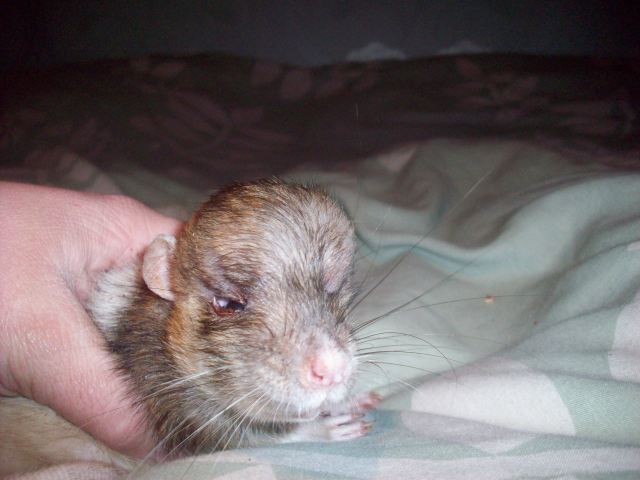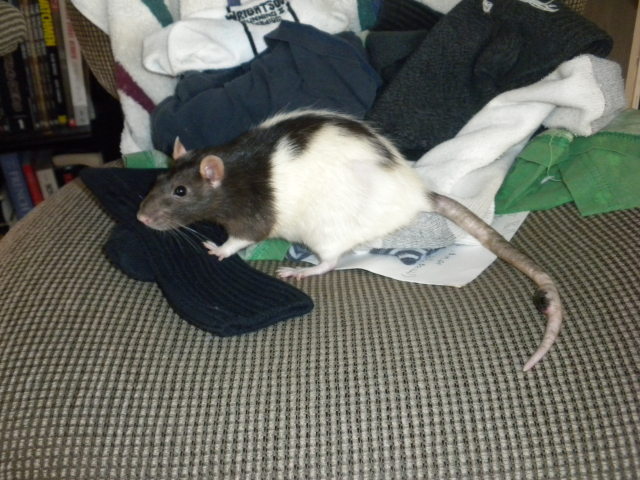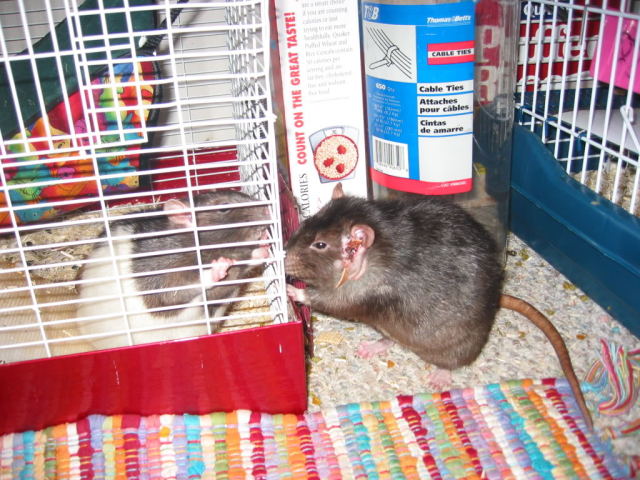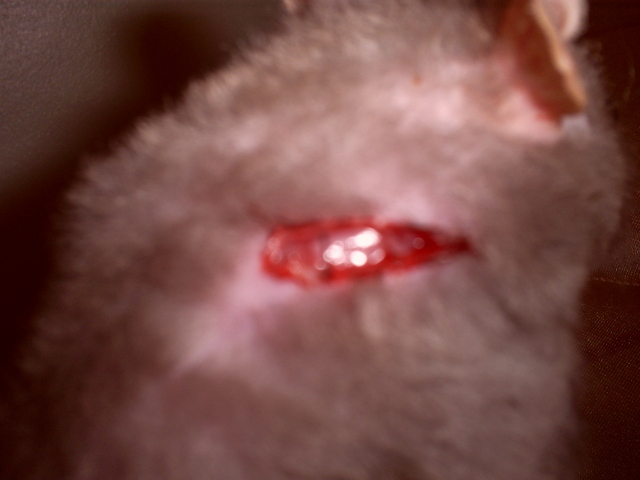QuestionI just want to make sure... get a second opinion:
The vet discovered something in Flurry mouth, like a growth, that's been disfiguring the left side of his face since i had him as a pup. The vet poked the growth in his mouth and mostly blood came out. He put him on Baytril to see if this would shrink the growth.
Flurry is just a little over 1 year old, and weighs 1 lb, and the dose he's on is 0.4cc BID of 10% Baytril. It's been two weeks.
--How long is safe at this high dose?
A week after the vet visit and being on Baytril, Flurry's right lymph node in his throat swelled. I brought him back to the vet, who fine-needled-aspirated the lymph node and found no cancer. He also re-checked the growth in his mouth and said it looked good, a little smaller. But i can tell there is still definitely something there
--But how long WOULD it take for antibiotics to shrink the growth?
--And also, why would his lymph node be swollen? It's been like that for a week and it's not getting smaller, actually seems bigger.
Any thought or suggestion you have would be great.
I had also brought another rat who had an abcsess on his throat. The vet emptied it and put him also on the same dose of Baytril. It's been two weeks and there is a slight tiny lump left. Nothing else will come out.
--How much longer should i safely keep him on Baytril? I know facial abscesses can be dangerous.
AnswerRats can actually take baytril for life, for example, in cases like chronic mycoplasmosis pulmonis that causes chronic respiratory infection. It is suggested that, with the first myco flare up, rats are put on baytril anywhere from 4 to 6 weeks and with a second infection, they should be put on it for life.
However, with your rat, baytril may not be the right antibiotic for their type of infection. Too many vets reach for baytril for EVERYTHING which is why our rats quickly become tolerant to this greatly needed antibiotic. I said greatly needed because it is one of the few meds that kill mycoplasmosis and when its misused, it wont work when it is needed most. For abscesses, its a good idea to use an antibiotic that can penetrate exadute, such as trimeth-sulfa. This drug is also used for urinary tract infections but it is a great drug for abscesses, as is keflex.
Swollen nodes can indicate spreading infection, but some viruses can cause this as well, sometimes causing a "bull frog" appearance to the throat. Nothing but time will help a virus as you know.
Rule of thumb when dealing with infection and antibiotics that vets SHOULD know and SHOULD follow, but sadly must go in one ear and out the other in college is that if there is either NO CHANGE or the condition worsens after THREE DAYS, its time to change meds. ALL antibiotics go to work in three days, sometimes four, but never any longer. They are in the blood stream by the second dose, usually 12 hrs later, and peak at 24 hrs. Results of improvement show in 48 hrs. Just like when a child has strep throat they cannot return to school until 24 hrs AFTER antibiotic treatment, and the child usually feels better at this time anyhow....
I would like to know, actually, who this vet is. He seems a bit extreme with the needle, aspirating this and aspirating that. Poor rat. Often an abscess in the mouth is linked to the teeth, usually the molars. Has the vet even considered this to be a possibility?

 Tumor on my male rattie
QuestionQUESTION: Hi! I recently acquired a male rat fr
Tumor on my male rattie
QuestionQUESTION: Hi! I recently acquired a male rat fr
 my rat bigboy
QuestionQUESTION: hi my name is stuart i have a male ra
my rat bigboy
QuestionQUESTION: hi my name is stuart i have a male ra
 Large lump on tail
Question
Lump on Swiffers Tail
My rat Swiffer has a lum
Large lump on tail
Question
Lump on Swiffers Tail
My rat Swiffer has a lum
 RE: Male rat has an abscess that wont go away
QuestionQUESTION: Hi there. Im not sure what to d
RE: Male rat has an abscess that wont go away
QuestionQUESTION: Hi there. Im not sure what to d
 Rat fight bite
QuestionPoor Neela
QUESTION: You answered my que
Rat fight bite
QuestionPoor Neela
QUESTION: You answered my que